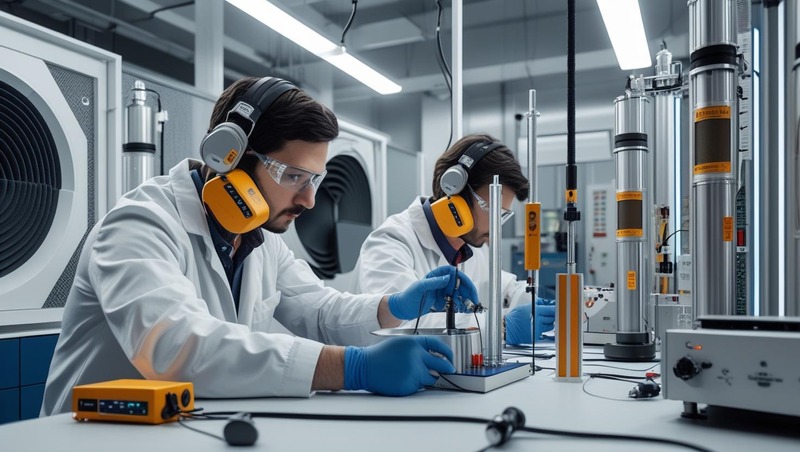Acoustic testing, a vital technique used to evaluate sound properties for product quality, structural integrity, and environmental compliance, is entering a new era marked by innovation and digital transformation. As industries increasingly rely on sound-based diagnostics for product development, safety assurance, and performance optimization, the future of acoustic testing is being reshaped by advanced technologies, regulatory evolution, and rising demand across various sectors.
One of the key drivers of innovation in acoustic testing is the integration of artificial intelligence (AI) and machine learning (ML) for advanced signal analysis. These technologies are enabling faster and more accurate interpretation of complex acoustic patterns, enhancing defect detection and fault diagnosis. AI-powered algorithms can filter noise, identify anomalies, and learn from data patterns over time, making acoustic testing more predictive rather than reactive. This is particularly valuable in applications like automotive NVH (Noise, Vibration, and Harshness) testing, aerospace diagnostics, and industrial machinery monitoring.
Download PDF Brochure @ https://www.marketsandmarkets.com/pdfdownloadNew.asp?id=131229239

The rise of smart sensors and embedded systems is also transforming the acoustic testing landscape. These next-generation sensors are capable of capturing high-fidelity acoustic data in real time and transmitting it wirelessly to centralized data platforms for analysis. Miniaturized and energy-efficient, these sensors can be deployed in remote or difficult-to-access locations, expanding the scope of acoustic monitoring in structural health, building acoustics, and environmental noise assessment.
Another significant trend is the growing use of 3D acoustic imaging and acoustic holography. These techniques provide spatial visualization of sound fields, allowing engineers to pinpoint noise sources and study sound behavior in complex environments. This has immense potential in automotive design, architectural acoustics, and medical diagnostics, where spatial sound analysis leads to more precise engineering and patient outcomes.
Cloud-based acoustic testing platforms are revolutionizing how data is managed, shared, and interpreted. Engineers and stakeholders can now access testing results remotely, collaborate in real time, and leverage cloud computing for deeper analytics. These platforms also offer scalable storage and data security, making them ideal for long-term monitoring projects or global testing programs that require consistency and compliance with international standards.
Market growth opportunities for acoustic testing are expanding across sectors. In the automotive industry, the shift toward electric and autonomous vehicles is creating new challenges in managing acoustic comfort and component integrity, driving demand for more sophisticated NVH testing. In construction, growing awareness of sound pollution and stricter building codes are pushing developers to adopt acoustic testing for building certification. Additionally, sectors like consumer electronics, healthcare (ultrasound and auscultation), and defense are increasingly relying on acoustic testing for product development, quality assurance, and safety compliance.
As environmental regulations tighten and consumers demand quieter, higher-performing products, companies are investing more in acoustic testing technologies to stay competitive. Standardization efforts and the development of more user-friendly, portable acoustic testing instruments are also helping to democratize access and encourage broader adoption of these tools.
In summary, the future of acoustic testing is being shaped by emerging technologies that enhance precision, efficiency, and insight. With its expanding applications and vital role in quality assurance, environmental compliance, and innovation, acoustic testing is poised for robust growth and transformation in the years ahead.
